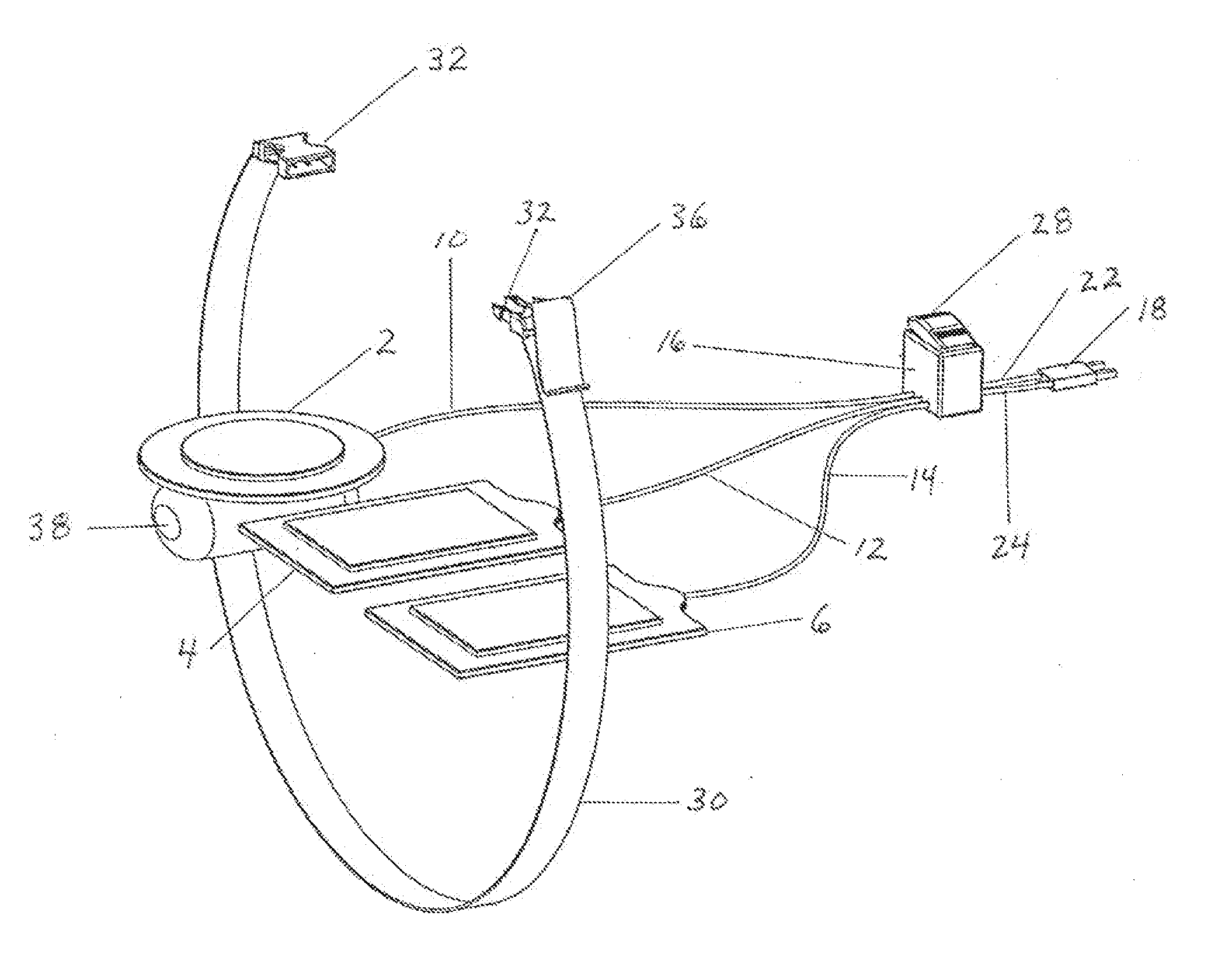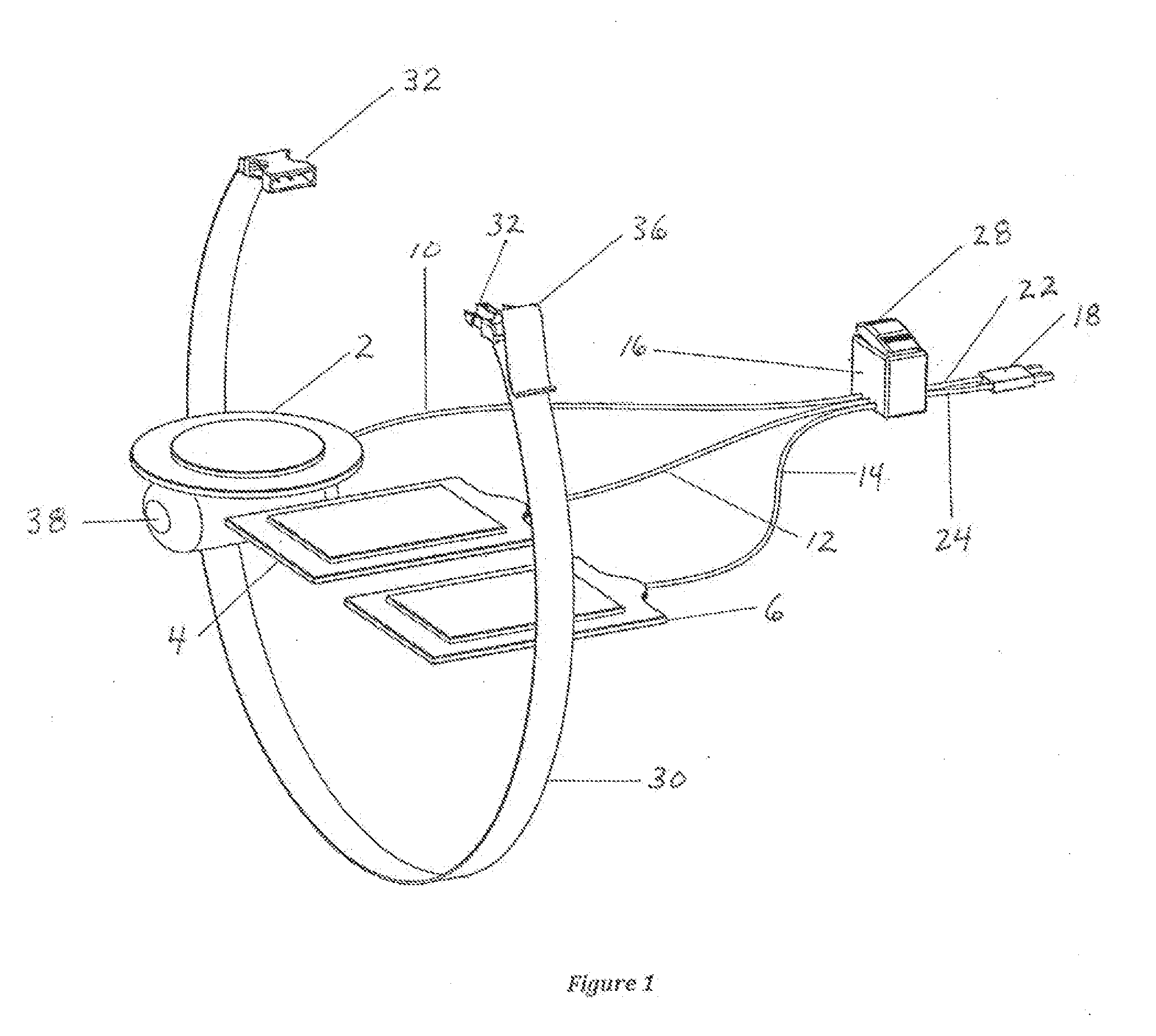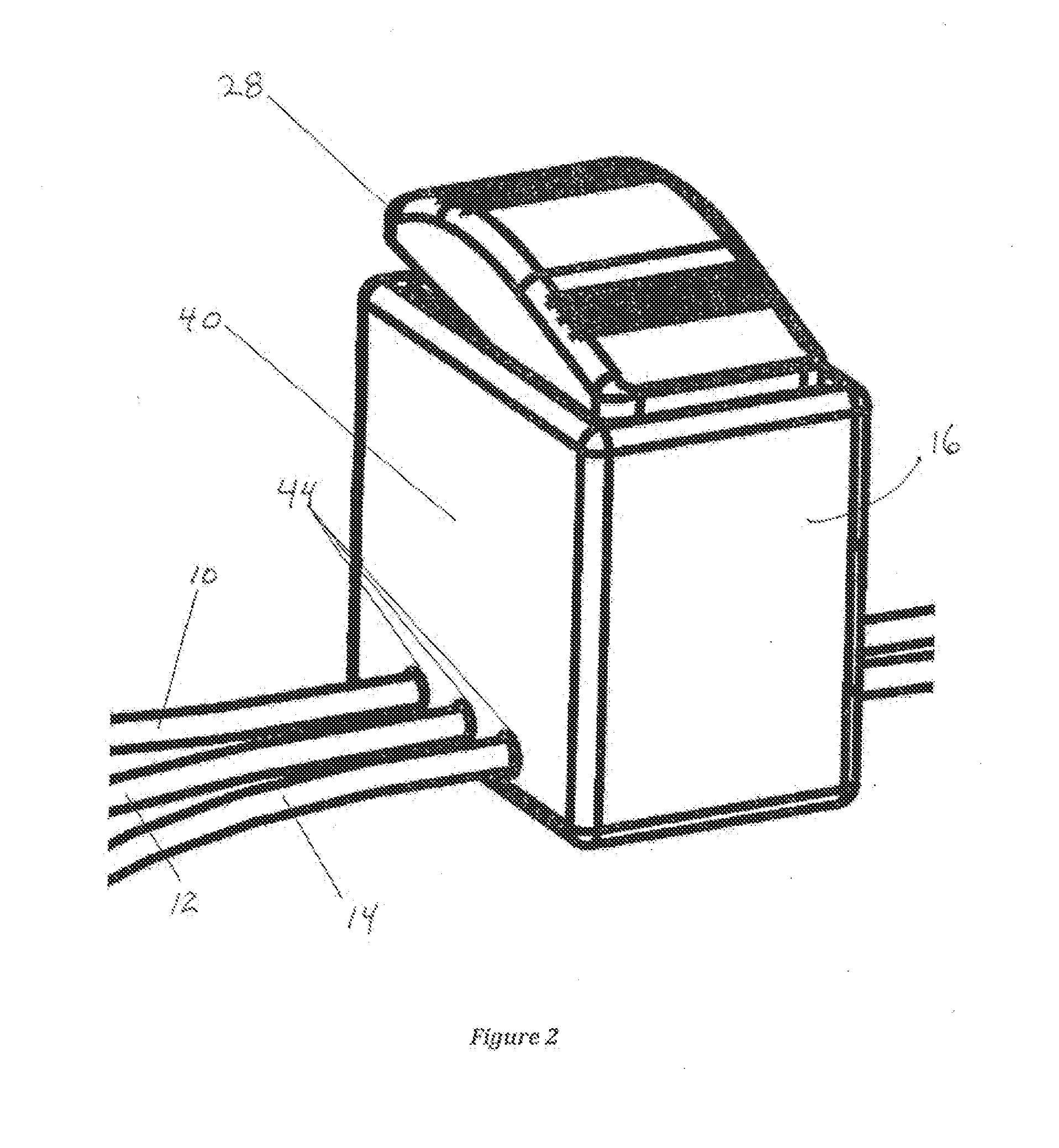Method and system for switching shock vectors and decreasing transthoracic impedance for cardioversion and defibrillation
a technology of transthoracic impedance and shock vector, which is applied in the field of devices, can solve the problems of unfavorable patient care, unfavorable patient safety, and inability to guarantee the work of any given shock, so as to improve the electrical current delivery to the heart, and reduce the transthoracic impedance
- Summary
- Abstract
- Description
- Claims
- Application Information
AI Technical Summary
Benefits of technology
Problems solved by technology
Method used
Image
Examples
Embodiment Construction
[0046]The present invention, in the various embodiments described herein, relates to a device, system, and method to direct shock vectors and reduce transthoracic impedance during cardioversion or defibrillation. The invention can perhaps be better understood from the drawings. With regard to FIG. 1, there is a representation of a typical layout of an embodiment of the invention. Here there are three adhesive electrode patches, an actuator patch 2 that would be placed on a patient's chest, and receiver patches 4 and 6 that would be positioned on the patient's back. Patches 2, 4, 6 are connected through insulated wires 10, 12, 14, respectively, to a switch (not shown) within switch casing 16. Also, patches 2, 4, 6 can have any desired or conventional or practical shape or size. A cardioverter / defibrillator connector 18 is connected via actuating wire 22 and receiving wire 24 to the switch within switch casing 16. Switch casing 16 has an actuator 28 for activating the switch.
[0047]A s...
PUM
 Login to View More
Login to View More Abstract
Description
Claims
Application Information
 Login to View More
Login to View More - R&D
- Intellectual Property
- Life Sciences
- Materials
- Tech Scout
- Unparalleled Data Quality
- Higher Quality Content
- 60% Fewer Hallucinations
Browse by: Latest US Patents, China's latest patents, Technical Efficacy Thesaurus, Application Domain, Technology Topic, Popular Technical Reports.
© 2025 PatSnap. All rights reserved.Legal|Privacy policy|Modern Slavery Act Transparency Statement|Sitemap|About US| Contact US: help@patsnap.com



